Abstract
Pigeons' choice responses on either of two keys occasionally produced entry into a terminal link associated with that key. During the terminal links, responses produced access to grain according to mixed- or multiple-interval schedules. The multiple schedules provided stimuli correlated with the interval of time preceding reinforcement whereas the mixed schedules did not. The two subjects reliably preferred the multiple schedules to the mixed schedules throughout a series of replications. Preference for the multiple schedule was much smaller than suggested by earlier work comparing multiple and mixed schedules that had much higher rates of entry into the terminal links. Preference for the multiple schedule was greatly increased in this study when the rate of entry into the terminal schedules was increased. As in previous studies, these high preferences may have been the result of a sharp increase in the number of reinforcements on the multiple (as opposed to the mixed) schedule. The reliable but smaller preferences for the multiple schedule found with lower rates of entry into the terminal links were unconfounded by differences in the number of reinforcements obtained in the two terminal links.
Full text
PDF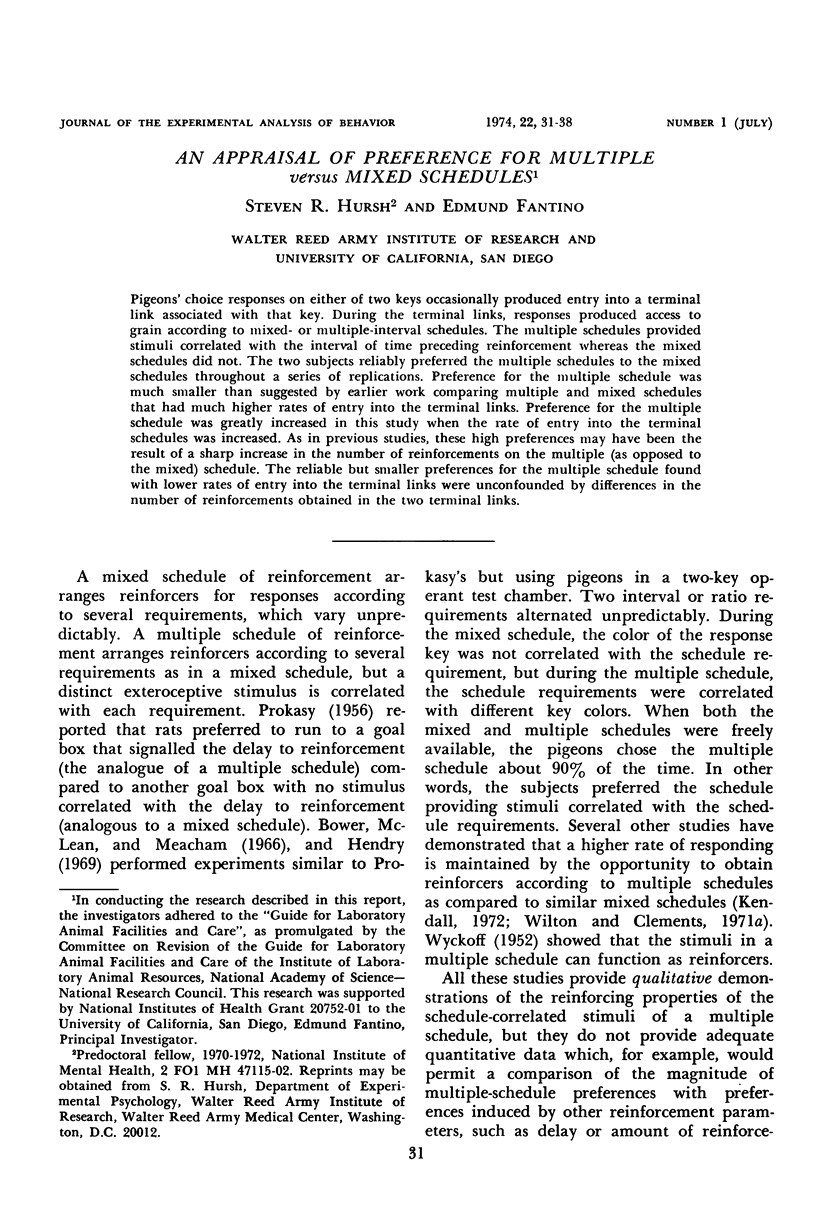
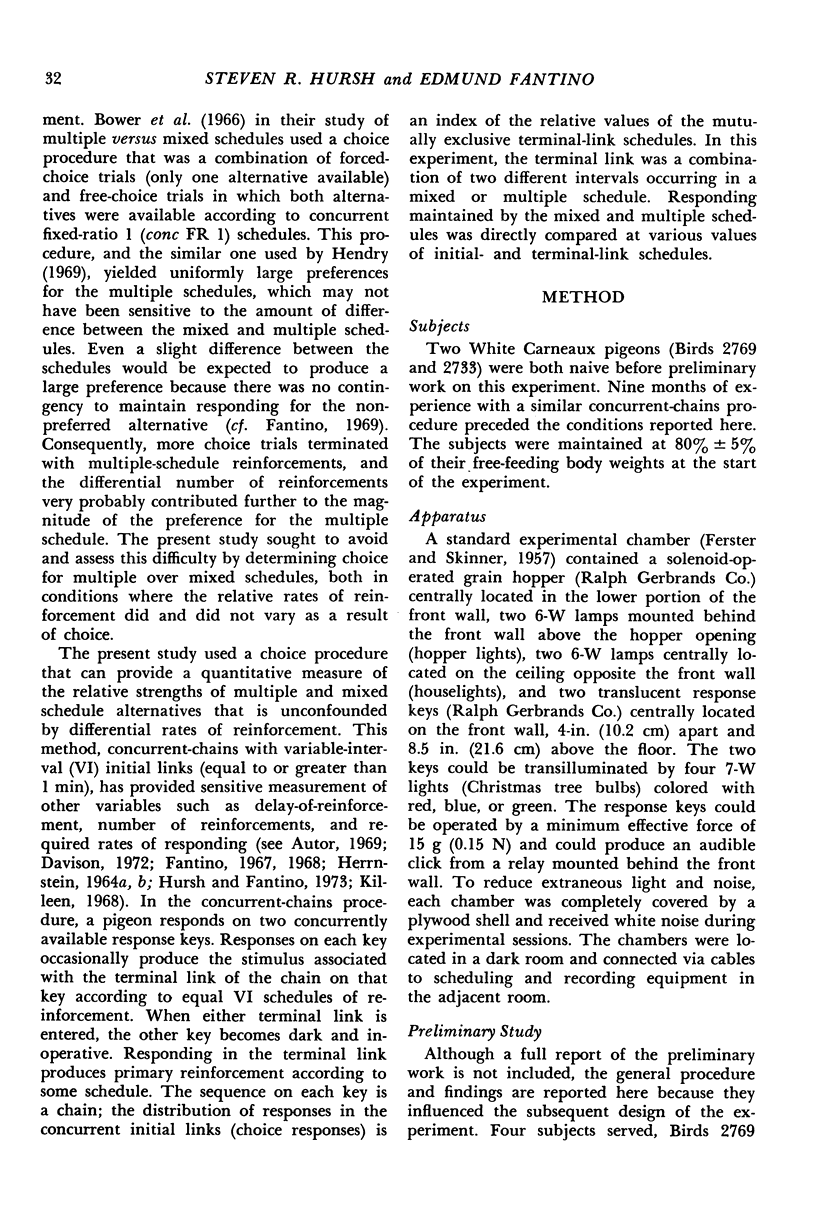
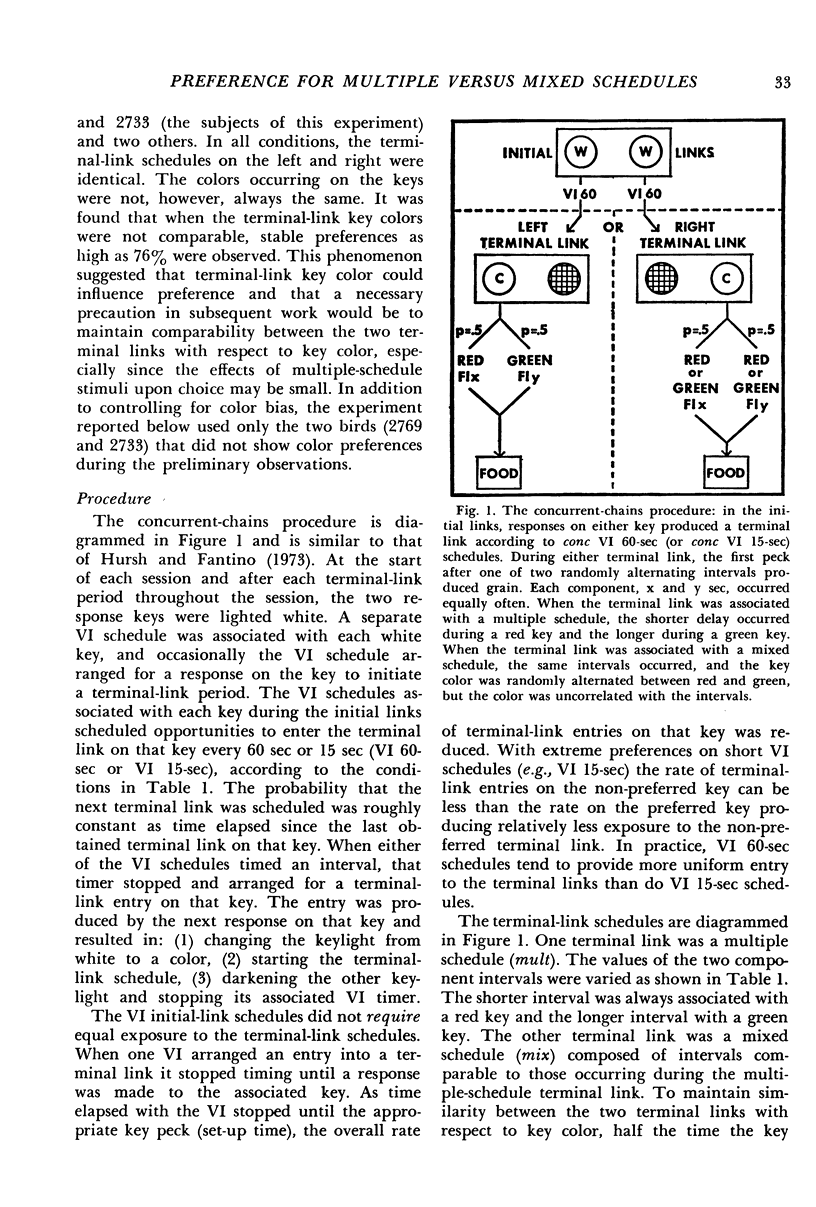
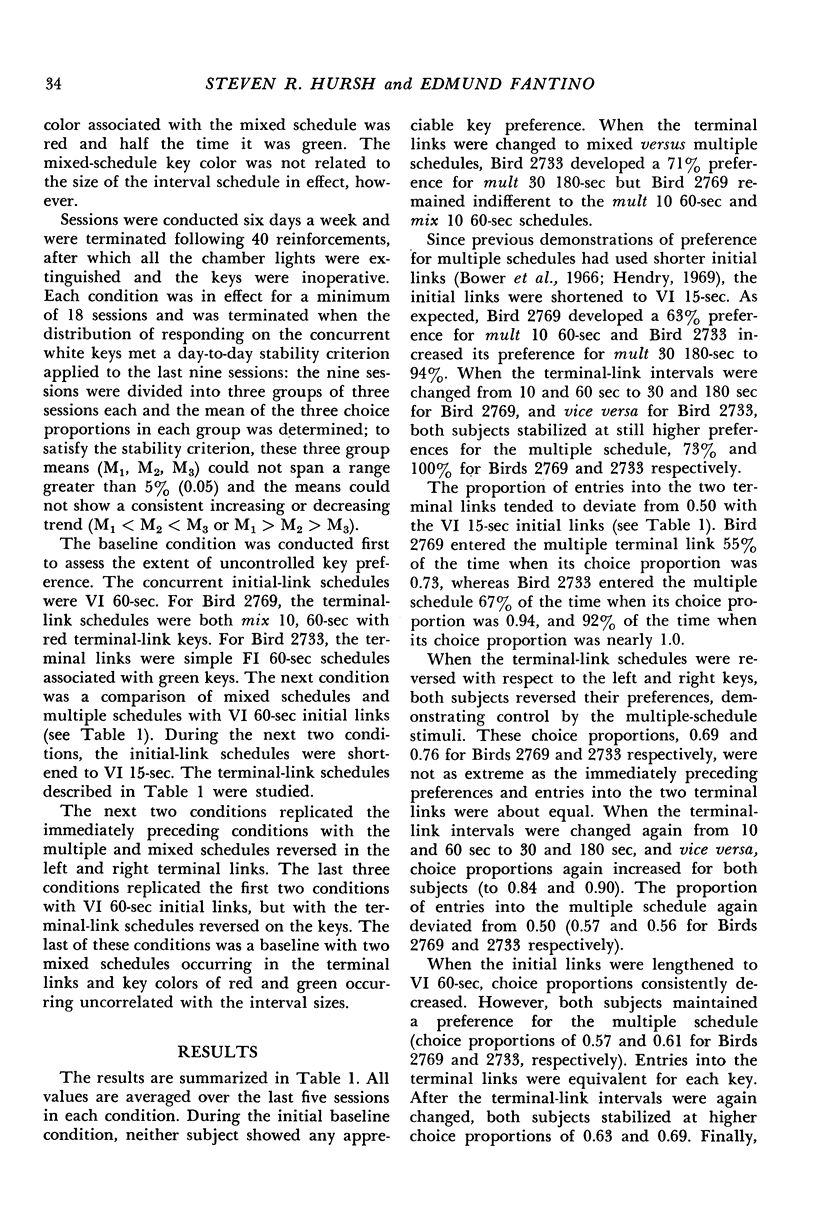
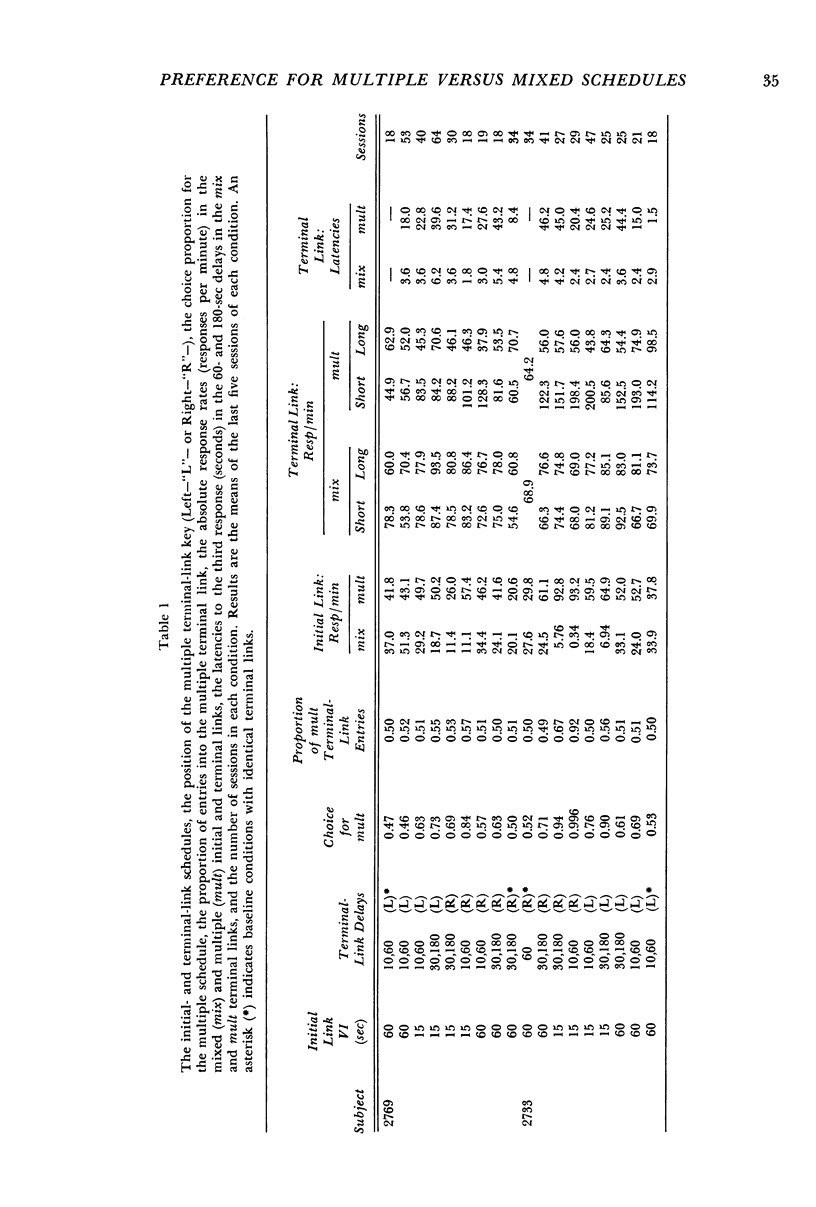
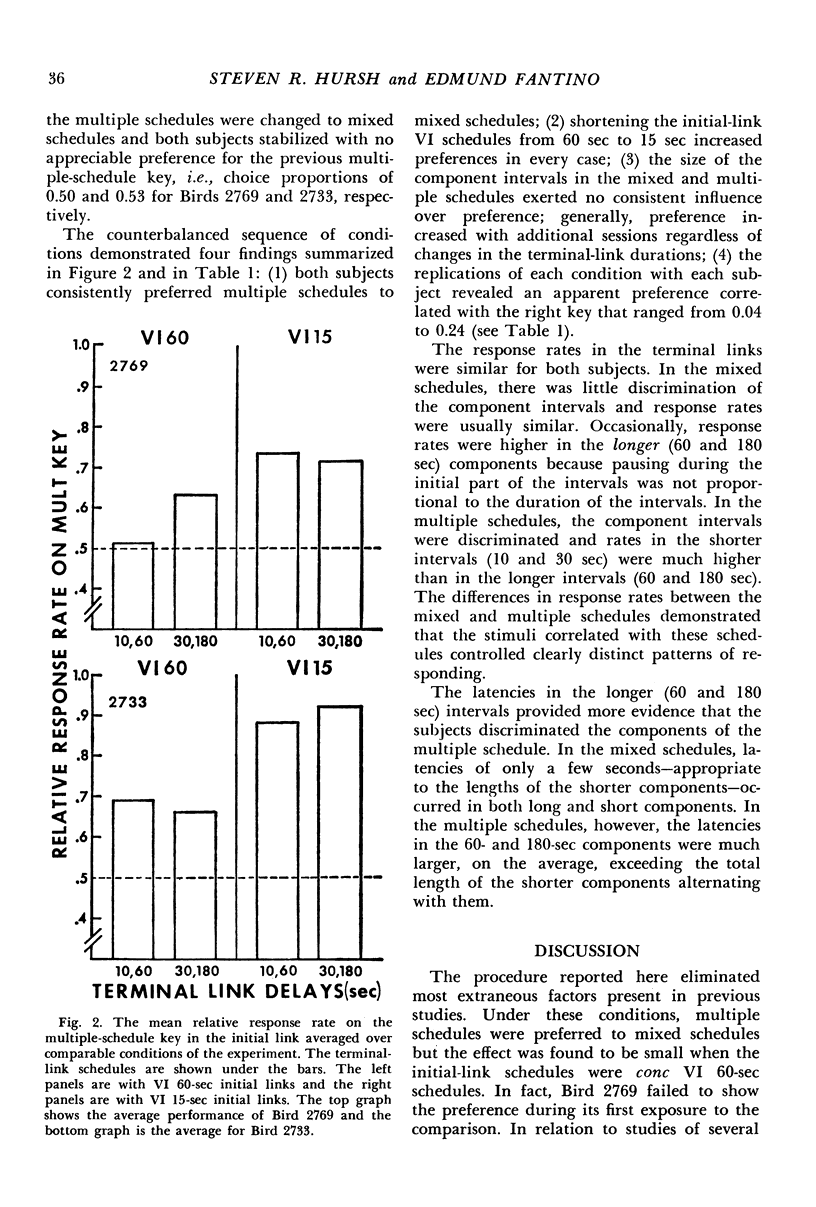
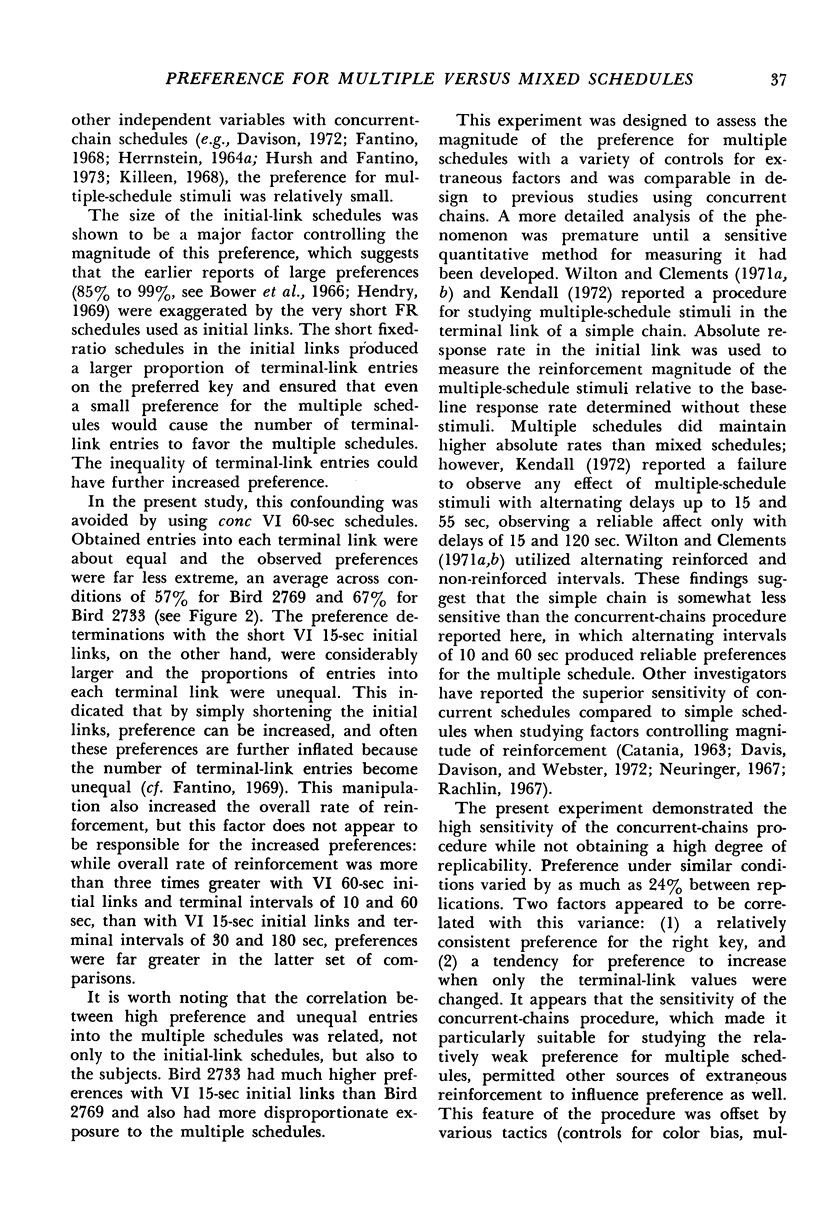
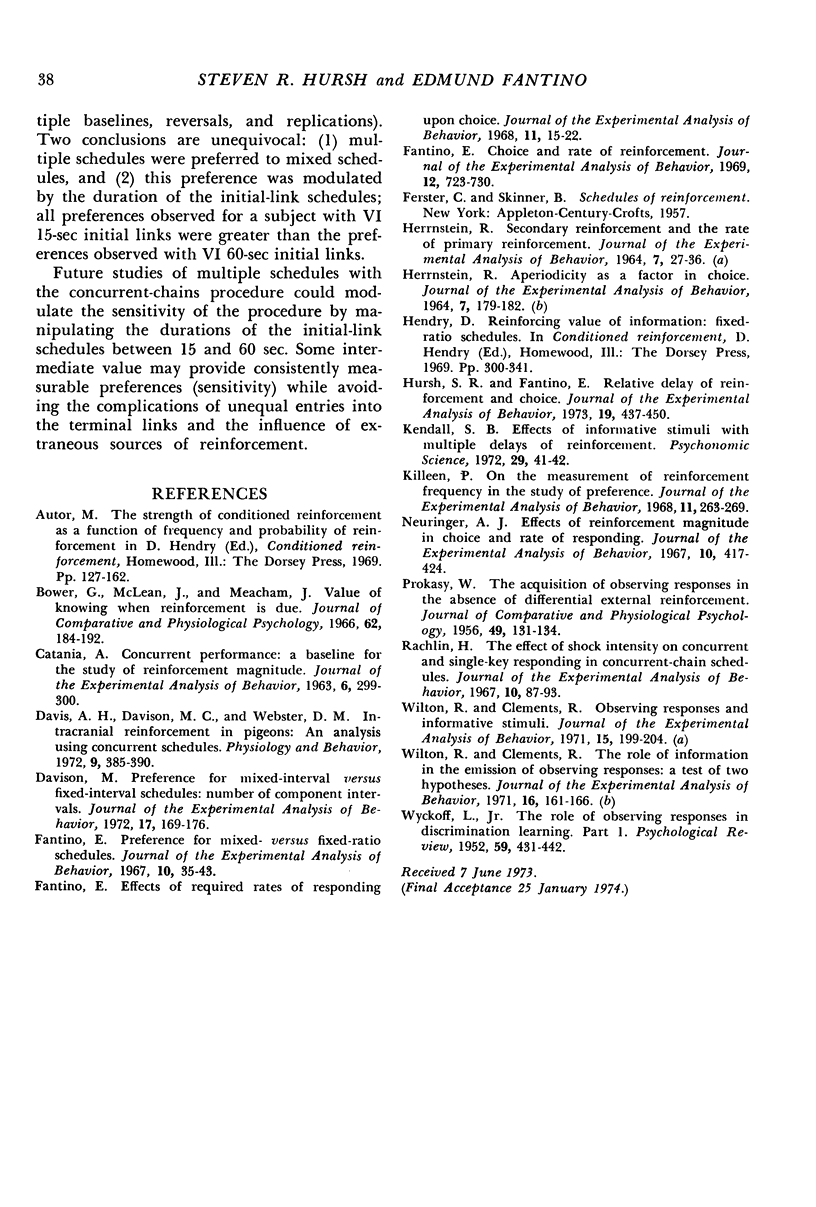
Selected References
These references are in PubMed. This may not be the complete list of references from this article.
- Bower G., McLean J., Meacham J. Value of knowing when reinforcement is due. J Comp Physiol Psychol. 1966 Oct;62(2):184–192. doi: 10.1037/h0023682. [DOI] [PubMed] [Google Scholar]
- CATANIA A. C. Concurrent performances: a baseline for the study of reinforcement magnitude. J Exp Anal Behav. 1963 Apr;6:299–300. doi: 10.1901/jeab.1963.6-299. [DOI] [PMC free article] [PubMed] [Google Scholar]
- Davis A. H., Davison M. C., Webster D. M. Intracranial reinforcement in pigeons: an analysis using concurrent schedules. Physiol Behav. 1972 Sep;9(3):385–390. doi: 10.1016/0031-9384(72)90164-3. [DOI] [PubMed] [Google Scholar]
- Davison M. C. Preference for mixed-interval versus fixed-interval schedules: number of component intervals. J Exp Anal Behav. 1972 Mar;17(2):169–176. doi: 10.1901/jeab.1972.17-169. [DOI] [PMC free article] [PubMed] [Google Scholar]
- Fantino E. Choice and rate of reinforcement. J Exp Anal Behav. 1969 Sep;12(5):723–730. doi: 10.1901/jeab.1969.12-723. [DOI] [PMC free article] [PubMed] [Google Scholar]
- Fantino E. Effects of required rates of responding upon choice. J Exp Anal Behav. 1968 Jan;11(1):15–22. doi: 10.1901/jeab.1968.11-15. [DOI] [PMC free article] [PubMed] [Google Scholar]
- Fantino E. Preference for mixed- versus fixed-ratio schedules. J Exp Anal Behav. 1967 Jan;10(1):35–43. doi: 10.1901/jeab.1967.10-35. [DOI] [PMC free article] [PubMed] [Google Scholar]
- Hursh S. R., Fantino E. Relative delay of reinforcement and choice. J Exp Anal Behav. 1973 May;19(3):437–450. doi: 10.1901/jeab.1973.19-437. [DOI] [PMC free article] [PubMed] [Google Scholar]
- Killeen P. On the measurement of reinforcement frequency in the study of preference. J Exp Anal Behav. 1968 May;11(3):263–269. doi: 10.1901/jeab.1968.11-263. [DOI] [PMC free article] [PubMed] [Google Scholar]
- Neuringer A. J. Effects of reinforcement magnitude on choice and rate of responding. J Exp Anal Behav. 1967 Sep;10(5):417–424. doi: 10.1901/jeab.1967.10-417. [DOI] [PMC free article] [PubMed] [Google Scholar]
- PROKASY W. F., Jr The acquisition of observing responses in the absence of differential external reinforcement. J Comp Physiol Psychol. 1956 Apr;49(2):131–134. doi: 10.1037/h0046740. [DOI] [PubMed] [Google Scholar]
- Rachlin H. The effect of shock intensity on concurrent and single-key responding in concurrent-chain schedules. J Exp Anal Behav. 1967 Jan;10(1):87–93. doi: 10.1901/jeab.1967.10-87. [DOI] [PMC free article] [PubMed] [Google Scholar]
- WYCKOFF L. B., Jr The role of observing responses in discrimination learning. Psychol Rev. 1952 Nov;59(6):431–442. doi: 10.1037/h0053932. [DOI] [PubMed] [Google Scholar]
- Wilton R. N., Clements R. O. Observing responses and informative stimuli. J Exp Anal Behav. 1971 Mar;15(2):199–204. doi: 10.1901/jeab.1971.15-199. [DOI] [PMC free article] [PubMed] [Google Scholar]
- Wilton R. N., Clements R. O. The role of information in the emission of observing responses: a test of two hypotheses. J Exp Anal Behav. 1971 Sep;16(2):161–166. doi: 10.1901/jeab.1971.16-161. [DOI] [PMC free article] [PubMed] [Google Scholar]


